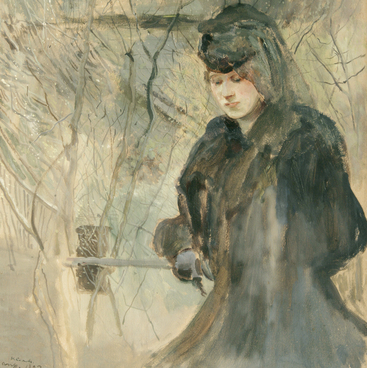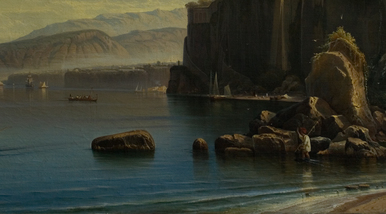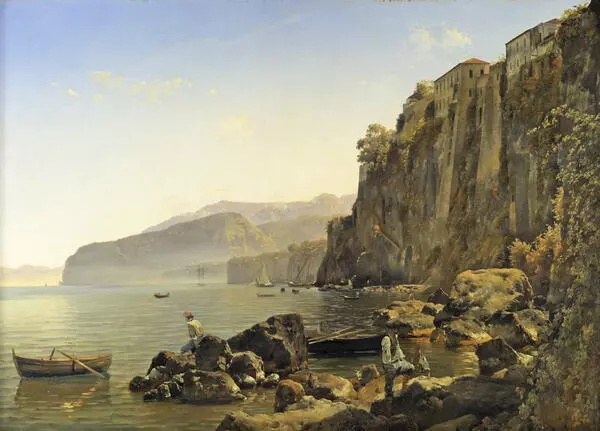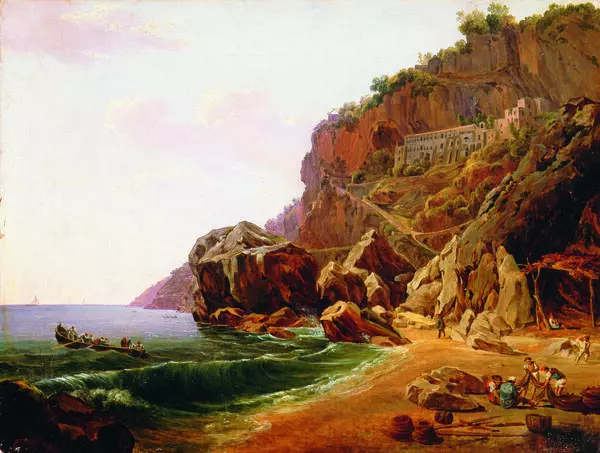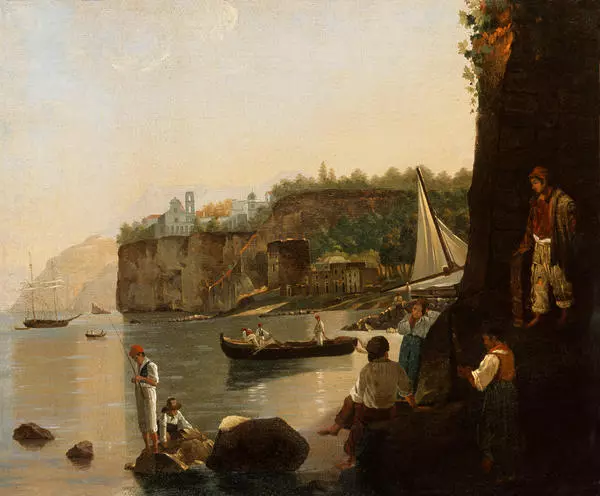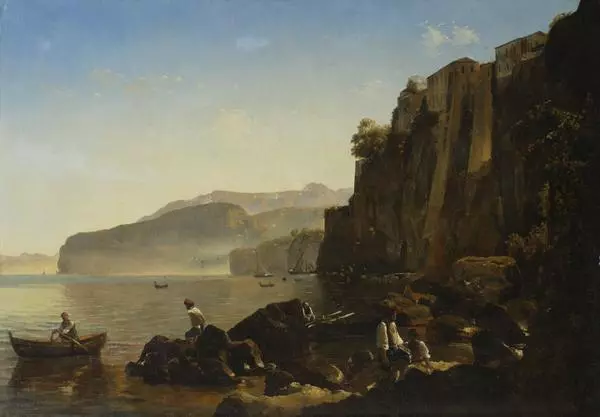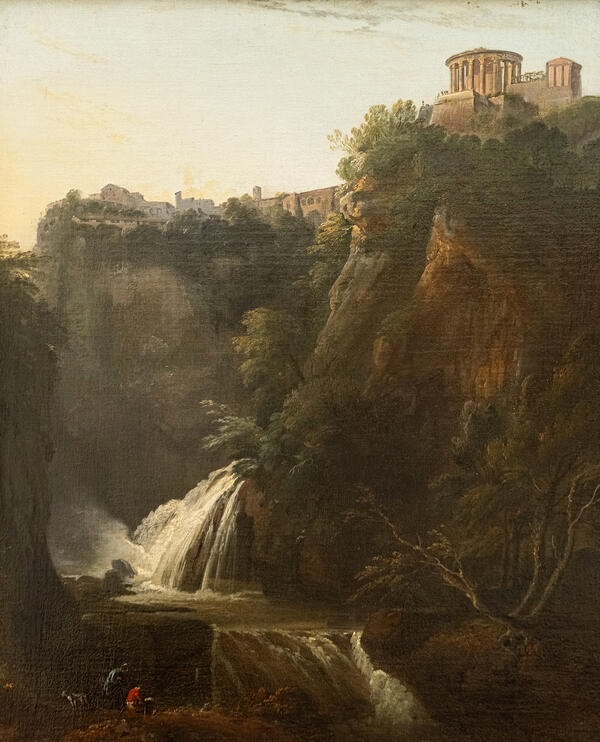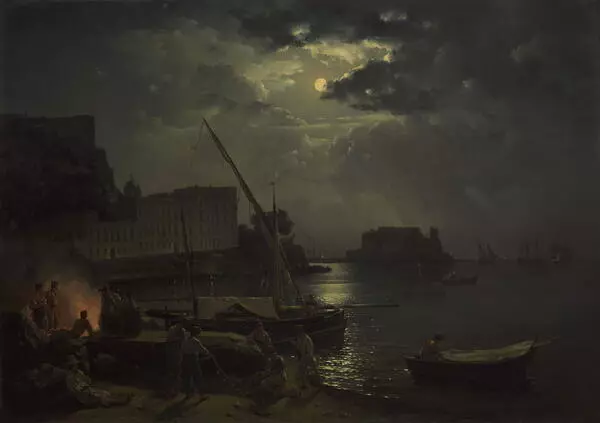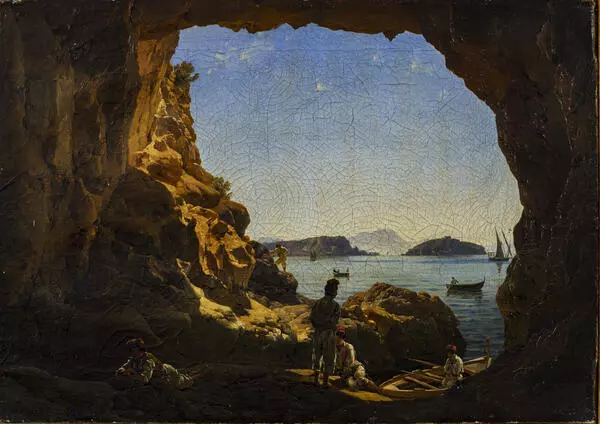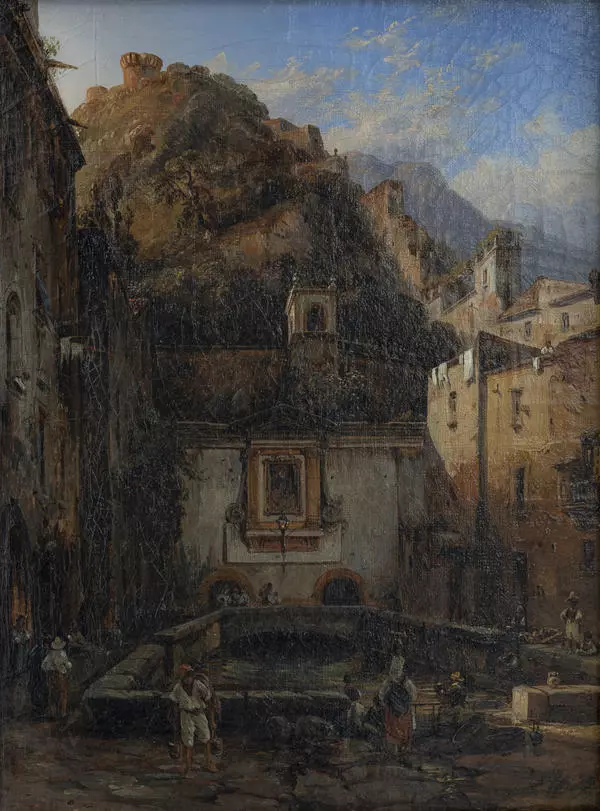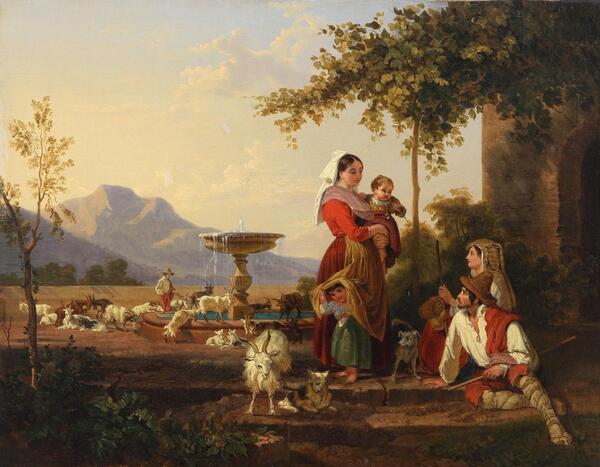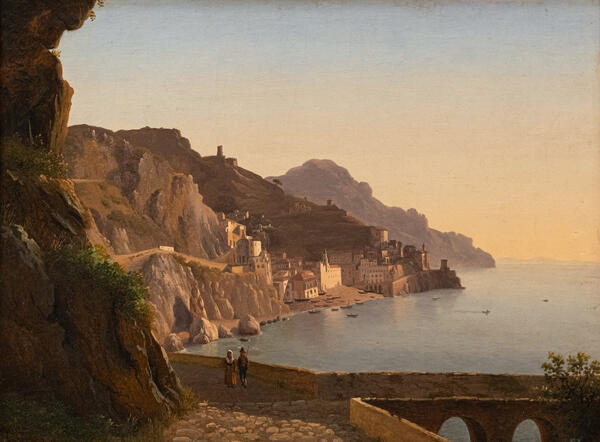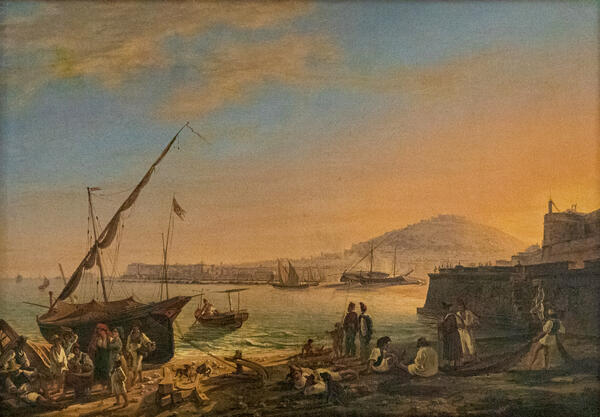Sylvester Shchedrin, a Russian painter of the 1st half of the 19th century, was a representative of a famous artistic dynasty. The painter’s father Feodosy Shchedrin was a sculptor and held the post of rector at the Imperial Academy of Arts. The artist’s uncle Semyon Shchedrin was a well-known landscape painter: he had a lot of orders from the imperial family and, as an Academy professor, the head of the landscape painting class for about 30 years.
Thanks to this, Sylvester Shchedrin was trained to become a painter from the early childhood. He started his studies at the Imperial Academy of Arts in 1800 and graduated with honors in 1811. His graduation work View from Petrovsky Island in Petersburg earned him a big gold medal and granted him the opportunity to go on a trip across Europe at the expense of the Academy.
Shchedrin arrived in Italy in 1818. There he developed a new non-classicist style of landscape painting; its main features were a significant attention to plein air painting and an innovative understanding of light and perspective.
The non-academic approach helped Shchedrin to make the inner space of his paintings more integral. Thus, his landscapes filled with life and movement looked more realistic, rather than being thought up.
Shchedrin spent in Naples 5 years and during that time, he was rapidly developing as a painter. The picture Santa Lucia in Naples from the Astrakhan Collection of Russian Art is a clear example of the painter’s “Neapolitan period”.
In the painting, Shchedrin depicted a view of the early19th century Naples: a row of brick houses by the water lit by the bright southern sun; a harbor with many boats; a lighthouse and ships in the port. In the foreground of the picture, one can see a lot of genre scenes: fishermen, sailors and traders are busy with their everyday routines. However, their images do not look like a kind of some monotonous staffage for livening up the view of the city: they have unique traits. Thanks to this, the everyday view of Naples looks integral, finished and realistic.
The painting Santa Lucia in Naples got to the Astrakhan Art Gallery by the distribution from the Central Repository of the State Museum Fund in 1927. Before tha, t it had been kept at the Tsvetkov Gallery in Moscow.
Thanks to this, Sylvester Shchedrin was trained to become a painter from the early childhood. He started his studies at the Imperial Academy of Arts in 1800 and graduated with honors in 1811. His graduation work View from Petrovsky Island in Petersburg earned him a big gold medal and granted him the opportunity to go on a trip across Europe at the expense of the Academy.
Shchedrin arrived in Italy in 1818. There he developed a new non-classicist style of landscape painting; its main features were a significant attention to plein air painting and an innovative understanding of light and perspective.
The non-academic approach helped Shchedrin to make the inner space of his paintings more integral. Thus, his landscapes filled with life and movement looked more realistic, rather than being thought up.
Shchedrin spent in Naples 5 years and during that time, he was rapidly developing as a painter. The picture Santa Lucia in Naples from the Astrakhan Collection of Russian Art is a clear example of the painter’s “Neapolitan period”.
In the painting, Shchedrin depicted a view of the early19th century Naples: a row of brick houses by the water lit by the bright southern sun; a harbor with many boats; a lighthouse and ships in the port. In the foreground of the picture, one can see a lot of genre scenes: fishermen, sailors and traders are busy with their everyday routines. However, their images do not look like a kind of some monotonous staffage for livening up the view of the city: they have unique traits. Thanks to this, the everyday view of Naples looks integral, finished and realistic.
The painting Santa Lucia in Naples got to the Astrakhan Art Gallery by the distribution from the Central Repository of the State Museum Fund in 1927. Before tha, t it had been kept at the Tsvetkov Gallery in Moscow.


